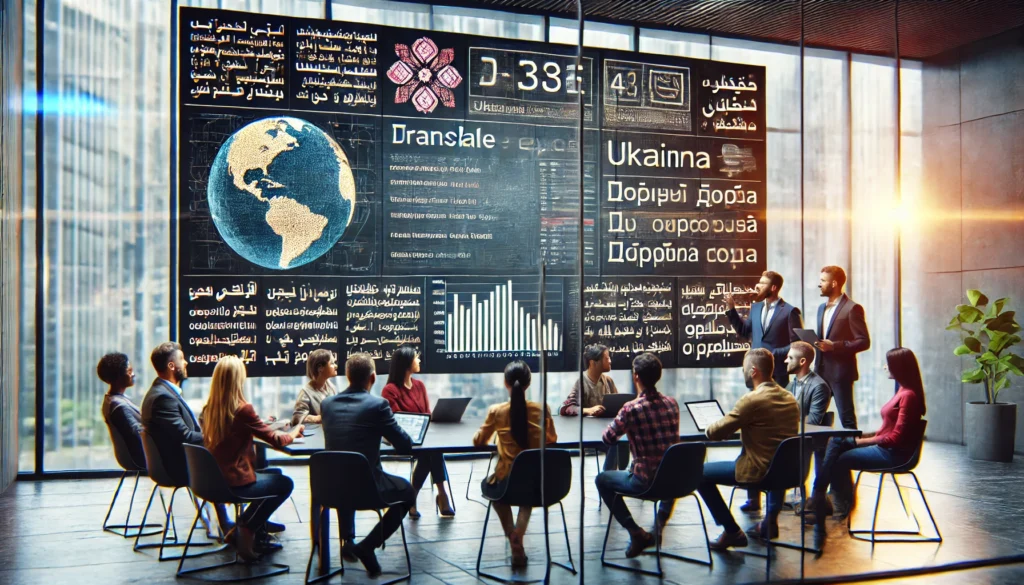Translation has always played a pivotal role in bridging communication gaps across different languages and cultures. With the advent of technology, the way we approach translation has dramatically transformed. This guide delves into everything about “Перекладач,” from its history and types to the future of translation technologies.
The History of Translation
Translation, as an art and science, has evolved over centuries. In ancient times, translators were crucial in preserving religious texts, literature, and treaties. With the invention of the printing press in the 15th century, translation became more systematic, allowing for the dissemination of knowledge to broader audiences.
The 20th century saw the introduction of machine translation systems, with IBM leading early computational linguistics efforts. Today, neural networks and artificial intelligence power translation systems, making them faster and more accurate than ever before.
Types of Translation
Translation is not a one-size-fits-all process. Each type of translation requires specific skills and approaches to ensure accuracy and context. Here are some key categories:
Literary Translation
Literary translation involves translating novels, poems, and plays. The challenge lies in preserving the author’s voice, cultural nuances, and literary devices while adapting them for a new audience.
Technical Translation
Technical translation focuses on translating manuals, guides, and technical documents. Precision and expertise in the subject matter are critical here to ensure users can follow instructions accurately.
Legal Translation
Legal translation demands a thorough understanding of legal jargon and concepts. Translators must ensure that translated documents maintain their legal validity.
Medical Translation
Medical translation involves translating patient records, medical journals, and prescriptions. It requires deep knowledge of medical terminology and a high degree of accuracy, as errors can have severe consequences.
Technologies Behind “Перекладач”
Modern translation tools rely on cutting-edge technologies. Here are the key innovations that power today’s Перекладач:
Machine Translation
Machine Translation (MT) is a core technology for automated language conversion. Initially rule-based, MT evolved into statistical models and now uses neural networks for higher precision. Services like Google Translate are prime examples of MT in action.
Artificial Intelligence and Deep Learning
AI and deep learning allow translators to analyze vast amounts of language data, improving their ability to provide contextually accurate translations. These systems continually learn from user feedback and new content.
Natural Language Processing
Natural Language Processing (NLP) enables computers to understand, interpret, and generate human language. This technology ensures that translations sound natural and contextually appropriate.
Choosing the Best Перекладач
Selecting the right translator depends on your specific needs. Consider the following criteria:
- Accuracy: Evaluate how well the translator captures the meaning and context.
- Supported Languages: Ensure the tool supports the languages you need.
- Features: Look for added functionalities like voice recognition, offline mode, and image translation.
- Ease of Use: A user-friendly interface enhances your experience.
Top Online Translators
Here’s a comparison table of popular Перекладач options:
| Translator | Features | Supported Languages | Pricing |
| Google Translate | Voice, text, and image translation | 100+ | Free |
| DeepL | High accuracy for European languages | 30+ | Free/Premium |
| Reverso | Contextual examples, synonyms | 25+ | Free |
| Yandex Translate | Photo and text translation | 90+ | Free |
Future of “Перекладач”
The future of translation looks promising, with technology at the forefront. Trends like real-time translation via wearables, advancements in AI, and greater accessibility for underrepresented languages will shape the industry. Collaboration between human translators and machines will also redefine accuracy and efficiency.
Practical Tips for Effective Use of Translators
- Understand Context: Avoid word-for-word translations for better results.
- Edit Translations: Always proofread and refine the output.
- Combine Tools: Use multiple translators to compare results.
FAQs
How do online translators handle idioms and cultural expressions? Online translators often struggle with idioms and cultural nuances. Some advanced tools like DeepL and Google Translate can provide context-based translations but might still require human intervention for perfect accuracy.
Can I use a translator for legal or medical documents? Translators can assist with basic translations, but it is recommended to use professional translation services for legal or medical documents due to the importance of accuracy and expertise.
Are there free alternatives to premium translation tools? Yes, tools like Google Translate, Yandex Translate, and Bing Translator offer free versions with robust functionality, though premium tools often provide better accuracy and features.
Do translators work offline? Many apps, like Google Translate, offer offline functionality, but you’ll need to download language packs in advance to use them without internet access.
How can I ensure my translated content is SEO-friendly? To make translated content SEO-friendly, ensure that keywords are appropriately localized, metadata is optimized, and content aligns with search engine guidelines for the target language.
Conclusion
“Перекладач” has revolutionized communication, breaking language barriers and connecting the world. From its historical roots to the integration of AI, the journey of translation showcases the incredible potential of technology in fostering understanding. Whether for personal or professional use, selecting the right translation tool can make all the difference in achieving clarity and precision.
Recommended Articles
The Ultimate Guide to Buying Recliner Sofas in Lahore
Samsung Galaxy J3 2016 OLX: The Ultimate Guide for Buyers and Sellers
OLX Pakistan: Your Go-To Online Marketplace
Combating Faisalabad Fake Notes: A Comprehensive Guide



